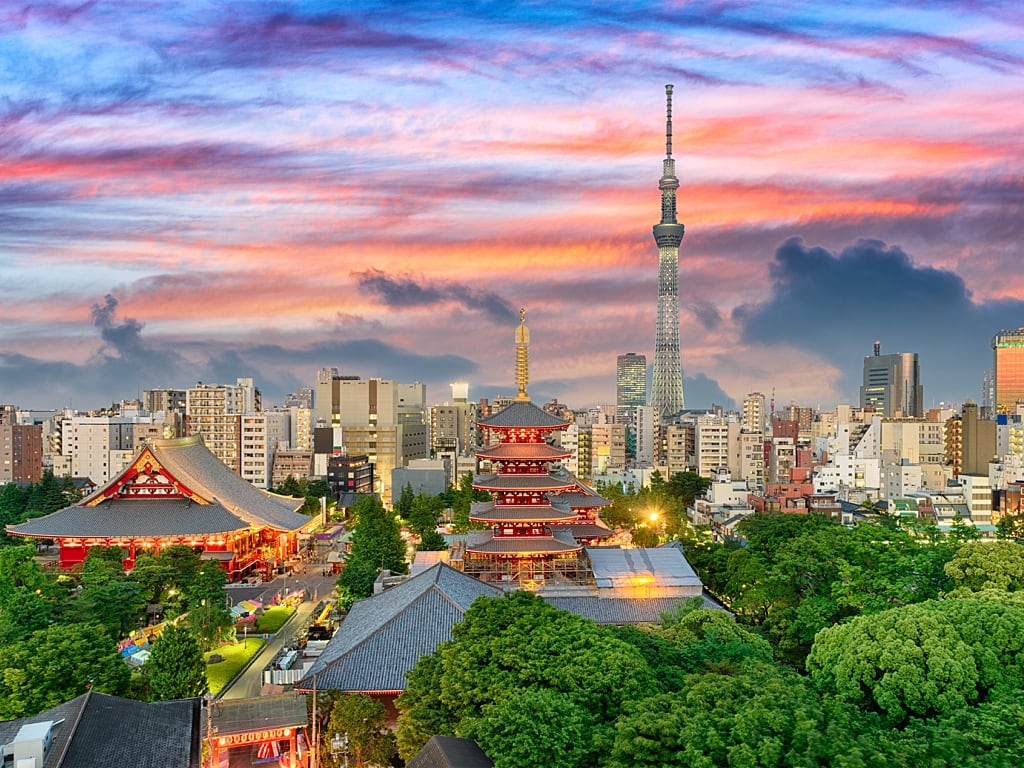Our first-time favorite 10-day Japan itinerary aims to inspire you and serve you as an outline. It’s not written in stone. We encourage you to customize this based on your interests and needs that you’ve identified. Every person’s claims and requirements will vary, so it’s essential to focus on your main travel goal rather than merely copying someone else’s itinerary. It’s also impossible to see everything in Japan. To create an itinerary with a realistic pace, narrow down your destination wish list and Japanese experiences vital to you.
We designed our itinerary based on “The Golden Route of Japan” as it traces the Old Tokaido Road that connected Edo (modern Tokyo) with Kyoto and Osaka. This is why Tokyo, Kyoto, and Osaka are the ideal cities for first-timers to feel associated with ancient times. Unlike other active and rushed itineraries, ours is to keep you at a leisurely pace. We limit 1-2 areas per day with authentic and culturally immersive activities, making this itinerary perfect for first-time visitors.
If you’re looking for a stuffed itinerary that you’ll have to rush from one to the next to see them all, this is not it. Japan is such a diverse country filled with regional experiences and cuisine that are far better enjoyed if you travel slower and take the time to connect with locals. Even the most meticulously planned itinerary won’t allow you to see even a fraction of what Japan has to offer. Be it 14 days, 21 days, or more, it’s simply isn’t enough. In Tokyo alone, it’s easy to spend two weeks! We’ve lived in Japan for over ten years, and we feel like we haven’t scratched the surface.
Use our itinerary as a way to knock out the significant destinations during your first trip to Japan. On your next trips, expand your reach and include other goals you want to discover! Put merely, visit Japan as many times as possible. If you find yourself still looking for help, we can handcraft this itinerary to suit your Japan wish list. Contact us here.
Why visit Japan?
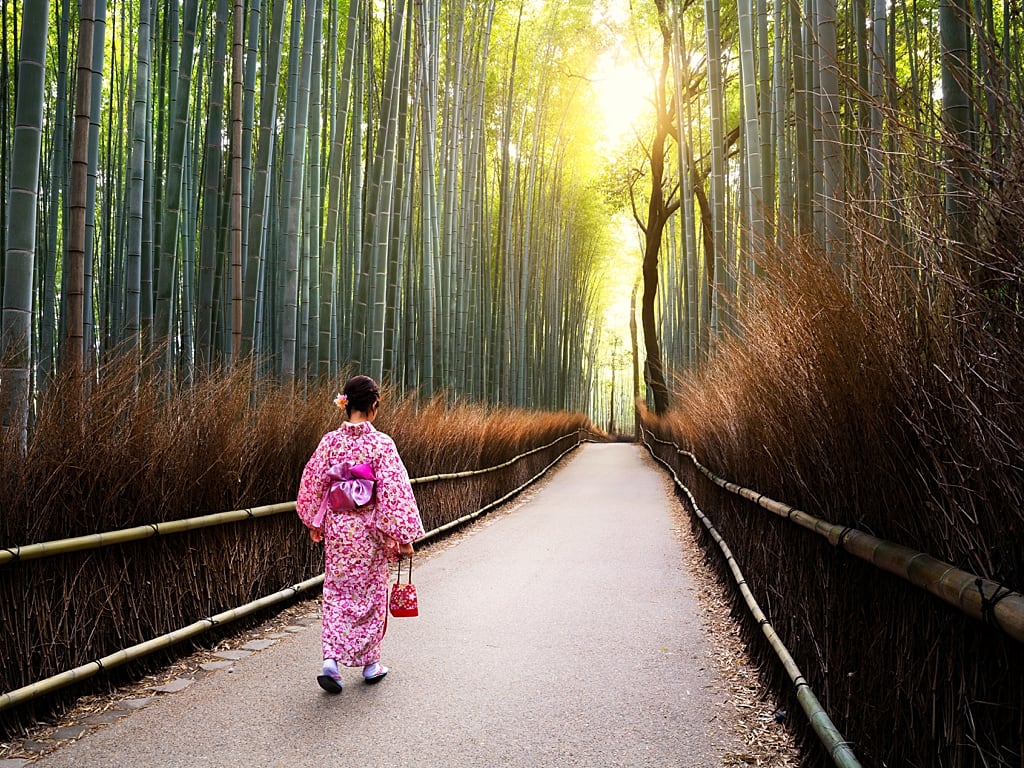
Japan is a strange mix of traditionalism and modernity. And the only country that gives you the ability to go from historic castles, shrines, and temples to robot greeters at several hotels. The Japanese people are incredibly polite, the cities are exceptionally clean, and the transportation system is second to none. Remarkably, a major train company issued a public apology for leaving 20 seconds early! I can’t think of a better example of Japanese politeness and transportation efficiency. Another area that sets Japan apart from all other countries is how far they accommodate tourists, the omotenashi culture (Japanese hospitality). This is surprising considering that Japanese tourism is still heavily dominated by in-country tourists.
The Japanese government stated their 2020 foreign tourism goal of 40 million people! But this isn’t to say it’ll be necessarily easy to navigate or ask for directions. The Japanese are taught English in school, but it’s similar to when Americans learn French or Spanish, a compulsory class took that is soon forgotten by most. So brush up on your charades skills and download a translator app. You’re going to need them both! More than anything, though, you’re going to need a well thought out itinerary due to the incredible amount of activities and attractions vying for your attention in Japan. This is what we believe makes Japan so unique and the reason it’s one of the most traveled to countries in the world. There’s just so much to see and do! You may also be concerned about budgeting. We’ve personally found that having a mid to high-range budget ($$$-$$$$$) gives you the right balance of experiencing Japan and its culture overall.
You might also find these articles helpful to prepare for your trip to Japan:
What you won’t find in this itinerary
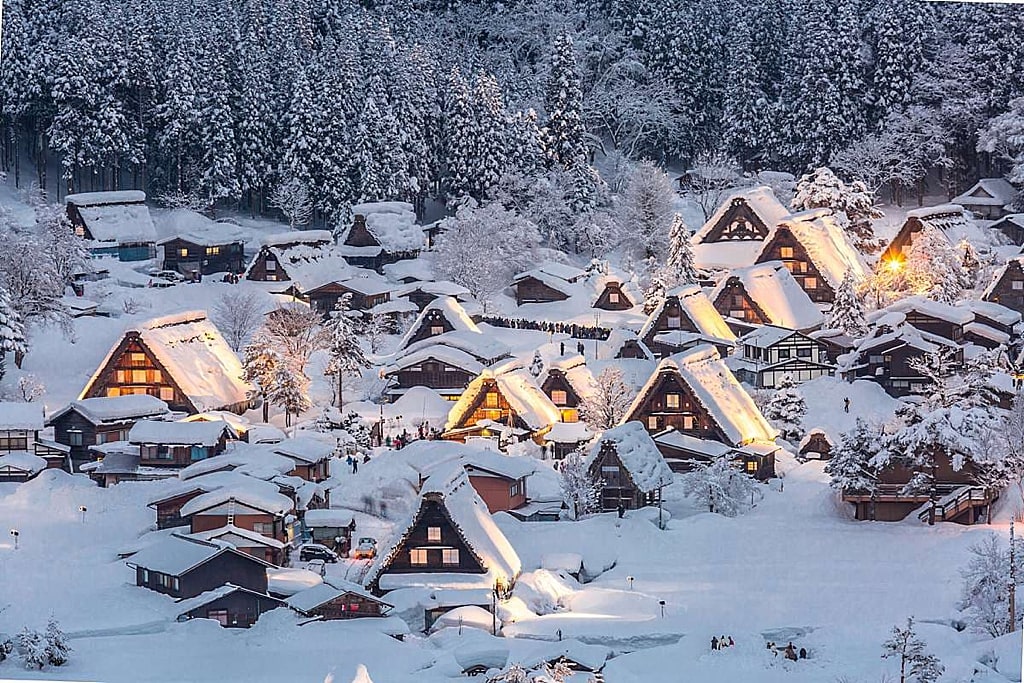
- We don’t promote activities that disrupt the Japanese way of life and animal welfare. You won’t see us suggesting the city go-karting tours or visiting animal cafes. Instead, we’ll be encouraging cultural activities like attending a tea ceremony or sado, watching a sumo tournament, or taking a cooking class to immerse yourself fully.
- You won’t find an active or backpacking-style itinerary here. Such as an overnight stay at temple Koyasan in Wakayama or cycling the Shimanami Kaido bridge in the Setouchi region. Those destinations and activities deserve a specialized itinerary of their own.
- You won’t find seasonal activities here. You can enjoy Japan year-round. But some places and activities are extraordinarily beautiful during certain times of the year. Such as cherry blossom viewing, Shirakawa-go illumination, Nikko in autumn, and seeing the snow monkeys in Jigokudani Monkey Park are a few that come to mind. This is why we created an itinerary based on the destinations that are not dependent on the time of year. We don’t want to set limits on when you should visit.
10 Day Japan Itinerary Overview
| Day By Day Activity | Overnight |
|---|---|
| Day 1: Yokoso! (Arrival) | Tokyo |
| Day 2: Tsukiji, Ginza, and Shibuya | Tokyo |
| Day 3: Asakusa and Neighborhoods | Tokyo |
| Day 4: Hakone | Hakone |
| Day 5: Hakone Attractions | Hakone |
| Day 6: Kyoto | Kyoto |
| Day 7: Walking Tour | Kyoto |
| Day 8: Day Trip To Nara Or Osaka | Kyoto |
| Day 9: Back To Tokyo | Tokyo |
| Day 10: Sayounara! | Departure |
Day 1: Arrival in Tokyo
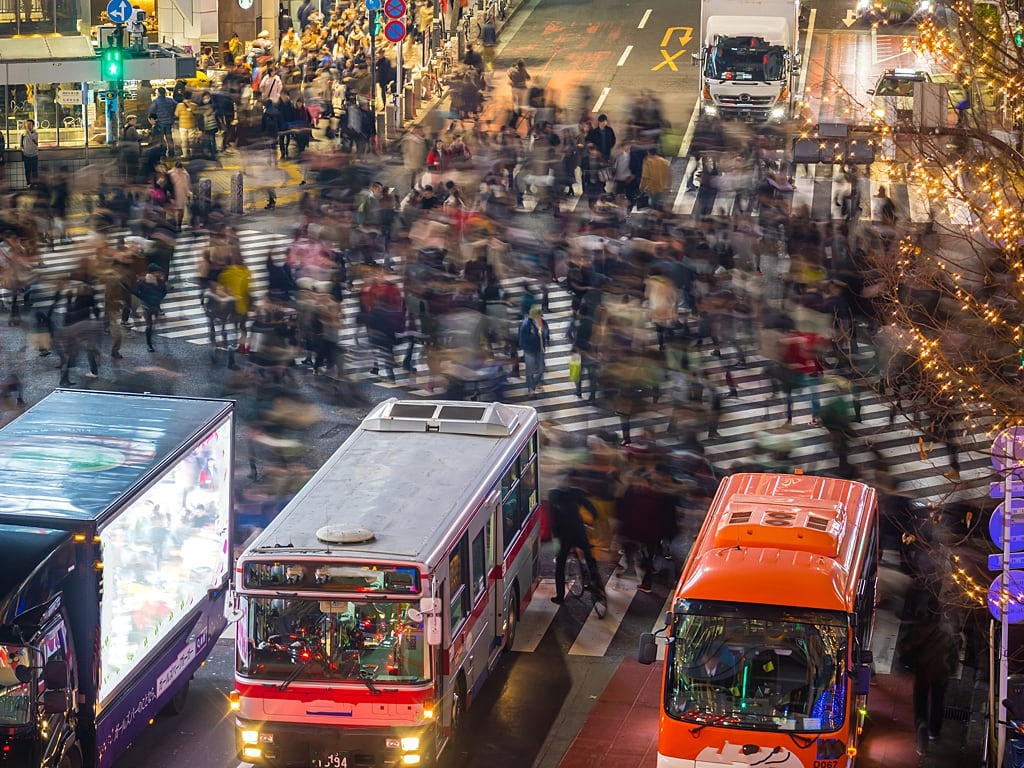
YOKOSO! (Welcome). I bet you’re happy to be off the plane after that long-haul flight! This day is yours to do with as you see fit. You can use it to recover from jet lag or explore Tokyo independently at your leisure. If you choose to stay at one of our recommended hotels, our suggestion would be to explore the area around it because they are all located in sightseeing districts. These hotels are all strategically located in central Tokyo and are all within a short walking distance to major train stations. All of these hotels also offer breakfast options.
- High-end: Imperial Hotel, The Peninsula, Four Seasons Marunouchi Hotel, Andaz Tokyo
- Mid-range: Tokyo Dome Hotel, Hotel Mystays Premier Hamamatsucho
- Budget: Dormy Inn Akihabara, Super Hotel Akihabara Suehirocho
Day 2: Tsukiji, Ginza, and Shibuya
Tsukiji and Ginza are Tokyo itinerary mainstays. That’s because Tsukiji is an essential piece of Tokyo’s history due to its famous tuna auctions, as well as being where you’ll find the freshest sushi possible. The other, Ginza, has a fascinating history and is one of Japan’s finest high-end fashion districts. Conveniently, both are within a short walk from each other, making them completely contrasting atmospheres even more fascinating.
Tsukiji
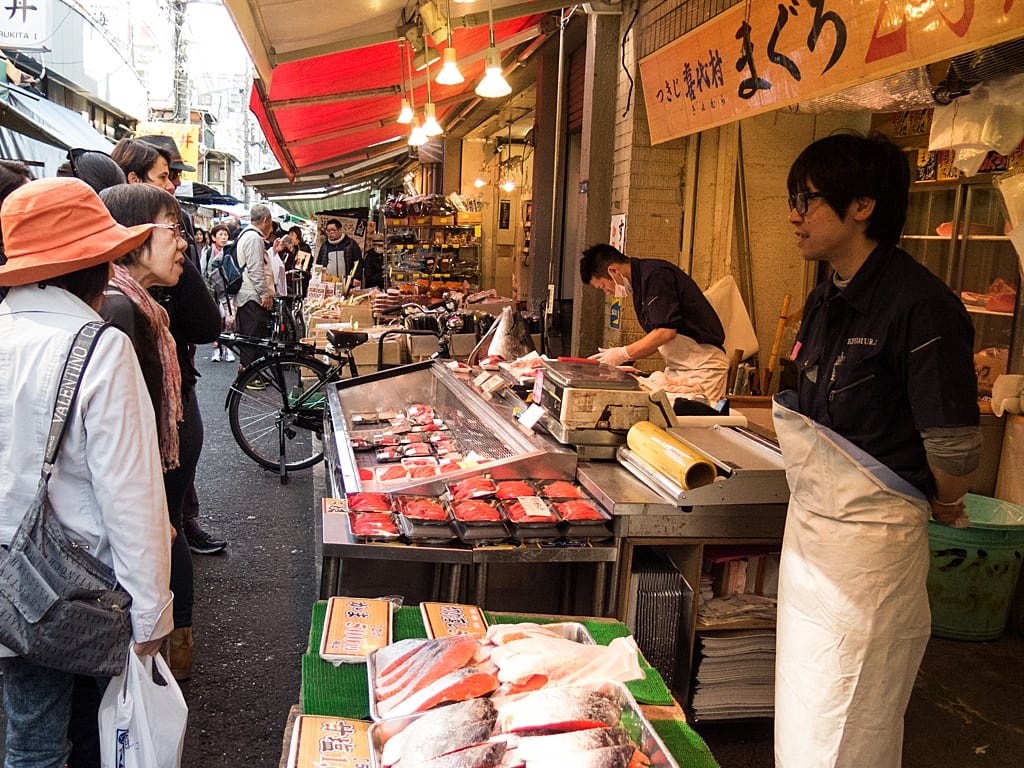
Closest Station: Tsukijishijo Station. Meet your tour guide for the Tsukiji Fish Market. Tsukiji is a fantastic district filled with an assortment of culinary delights. Although the main tuna auction has moved to Toyosu in Odaiba, the outer market is alive and kicking. It’s still filled with unique retail shops, sushi restaurants, chefs gathering, and restaurant supplies. All things food! We recommend this professional and licensed guide known as the “Tsukiji King”. He has extensive knowledge about the Tsukiji fish market. Make sure to reserve your spot in advance.
After your Tsukiji tour, it’ll be time to explore Ginza’s neighboring district, which is just a short walk from the famous fish market. On your way to Ginza, we suggest taking the small detour to pass by Tokyo’s primer kabuki theater, Kabuki-za. Use Google map to find your way. If you are interested in Kabuki Arts, you can watch a performance which runs every day.
Other alternative activities in Tsukiji are:
- Experience a ramen & gyoza cooking class (made from scratch!) in Tsukiji, a Certified Sake Sommelier conducts this class; or if you have children, they will love this fun and cute bento box making.
Ginza
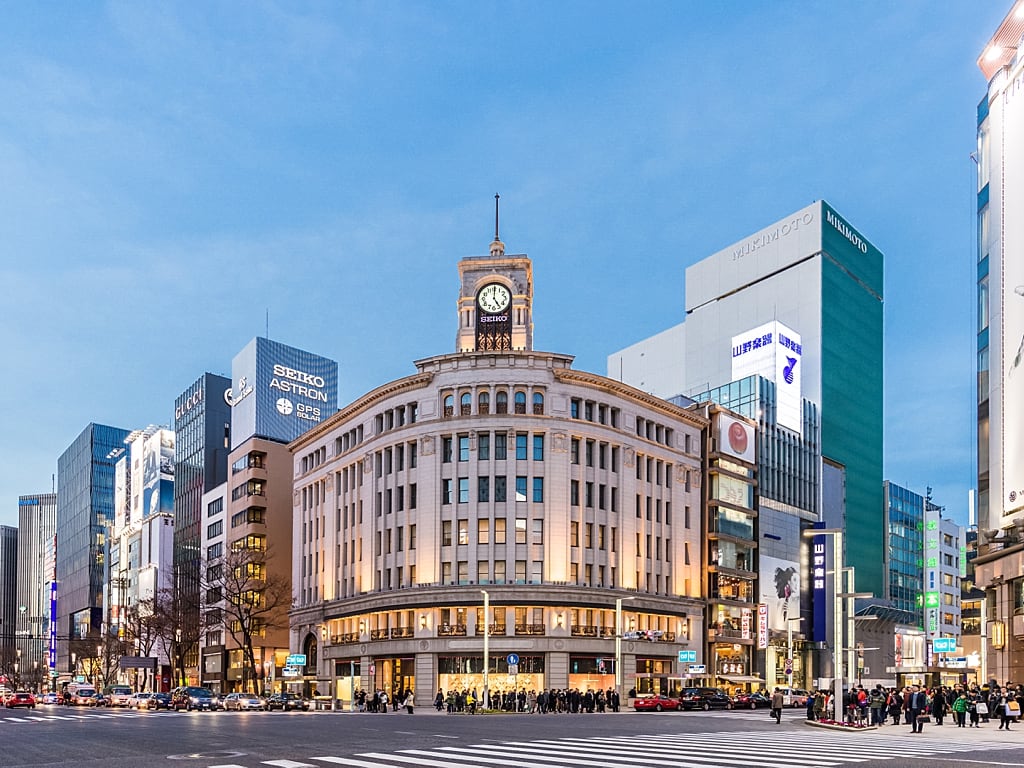
Moving on, Ginza itself is such a feast for the eyes, living up to its nickname “Ginza Pedestrian Paradise.” It has numerous boutique, upscale shops, and local and international flagship stores. UNIQLO Ginza is the most famous flagship store here with 12 floors in total! You can also walk into department stores, such as Ginza SIX, Mitsukoshi, and Matsuya. Or explore the underground world of depachika, a Japanese term for the basement floor, a dazzling maze of food halls and gourmet shops ranging from wine salons, tea shops to cake & chocolate cafes. Best of all, there are several food tastings available here! After Ginza, you can head back to your hotel to continue recovering from jetlag and recharge for Shibuya or head straight there since it’s only a 15-min train ride from Ginza. It’s totally up to you.
Shibuya
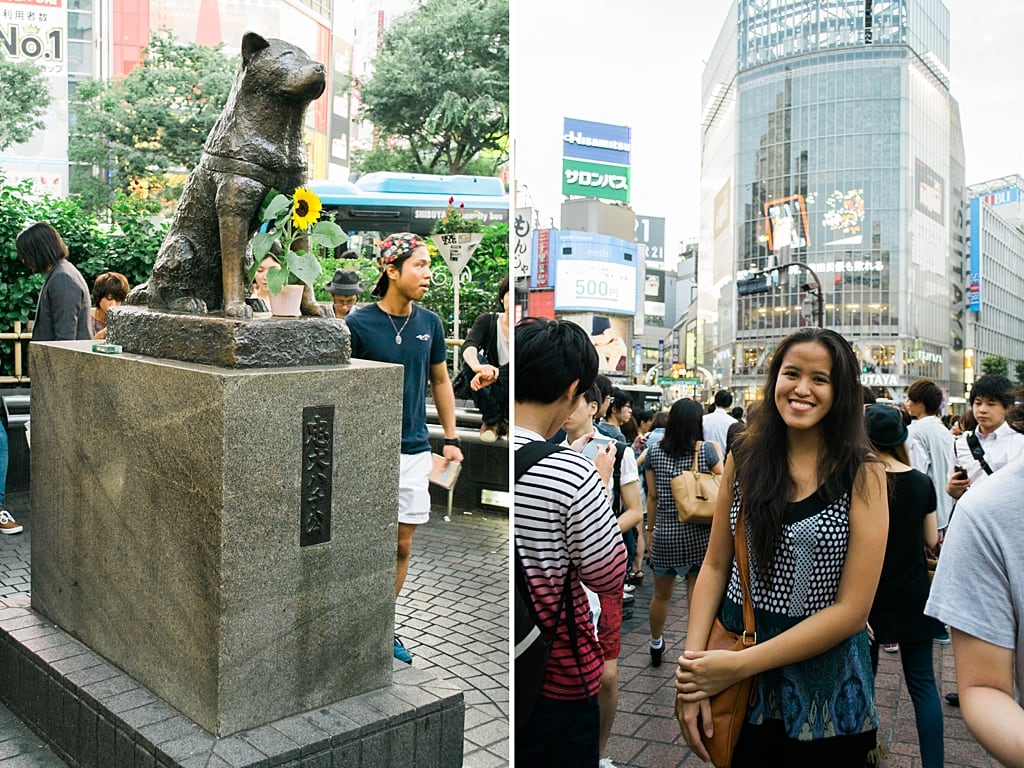
Closest Station: Meiji-Jingumae Station (also known as Harajuku Station). Next is the trendy Harajuku district, the shopping complex of Omotesando Hills, the famous Shibuya Scramble Crossing, and see the famous Hachiko statue. All of which are part of the Shibuya ward (city-level municipality of Tokyo). Behind Harajuku Station is Meiji Shrine, which you might have heard often from travel websites or blogs. You will see more shrines in Kyoto, so Meiji Shrine is omittable. However, there are often traditional Japanese weddings taking place here. If you’d like a chance to see the bride and groom making their way through the grounds, it may be worth the detour. Some people hire a tour guide in Harajuku to cover its backstreets and hidden shops and cafes, but it’s unnecessary in this case. Instead, we’ve created a Harajuku-Shibuya walking tour map here for you to follow. Shibuya’s whole area is an absolute sensory overload, so you might not even pay attention to the tour guide at all. An exception to this is at night, where joining an izakaya or bar-hopping tour is an experience not to be missed in Shibuya. If you’re looking for the most authentic izakaya experience, hire a local guide to take you to the hideaways. Click to see bar-hopping tours in Tokyo or walking food tours here.
Day 3: Asakusa and Neighborhoods
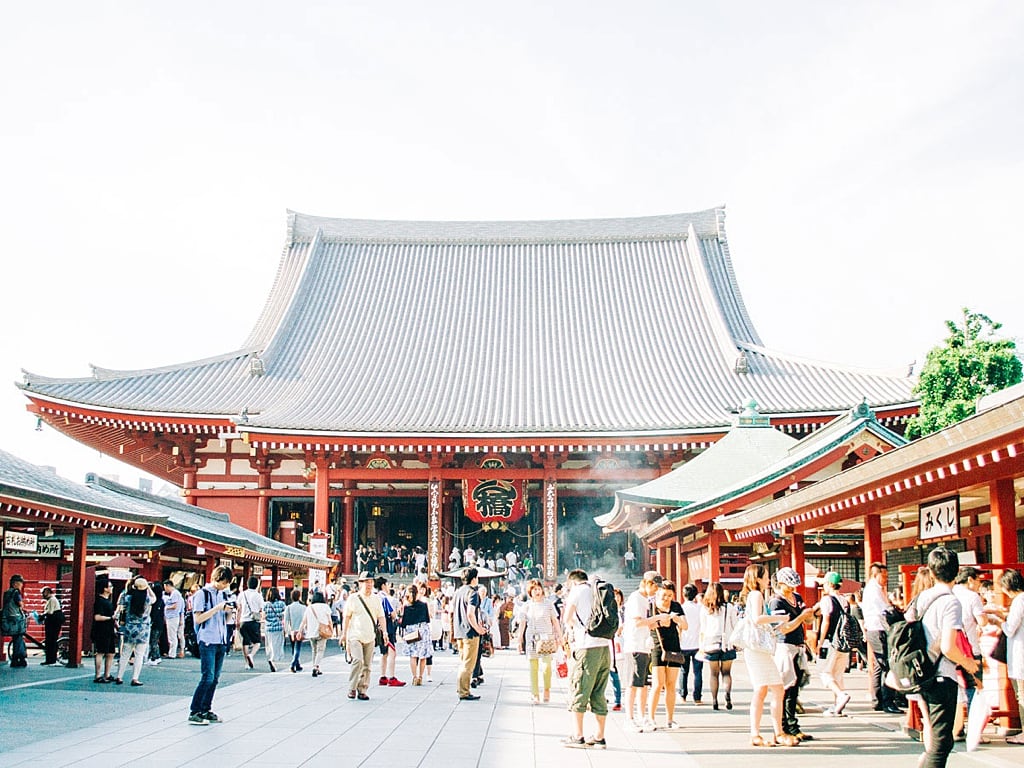
Asakusa
Closest Station: Asakusa. Asakusa has Tokyo’s ancient and oldest Buddhist temple, Senso-ji, dating back to 628 AD. As you enter the temple grounds, you’ll see a massive gate called Kaminarimon (lit. “Thunder Gate”) with a giant lantern in the middle and golden statues on either side. As you approach Senso-ji you’ll walk along the long Nakamise-dori, and you’ll see another massive structure, a 2-story “house gate” called Hozomon. Since Senso-ji is a vital temple, be prepared to tackle the grounds with the crowd. The Tokyo Skytree, the world’s tallest tower, is also visible from the temple grounds of Senso-ji, so you might want to take a few photos of it! There is a free insightful guided tour in Asakusa that you might consider joining for the best experience. It’s a free tour, so tipping is encouraged. These are local volunteer guides who work hard to give tourists the best experience. Since it’s free, it can fill up fast, so you must book at least 10-14 days in advance.
After your Asakusa tour, you can head back to your hotel and rest or continue exploring. Should you decide on the latter, here are our suggested sightseeing neighborhoods around Asakusa for your afternoon excursion. All of which are only short train rides away from Asakusa. The choice is yours, but just choose one!
Option 1: Imperial Palace
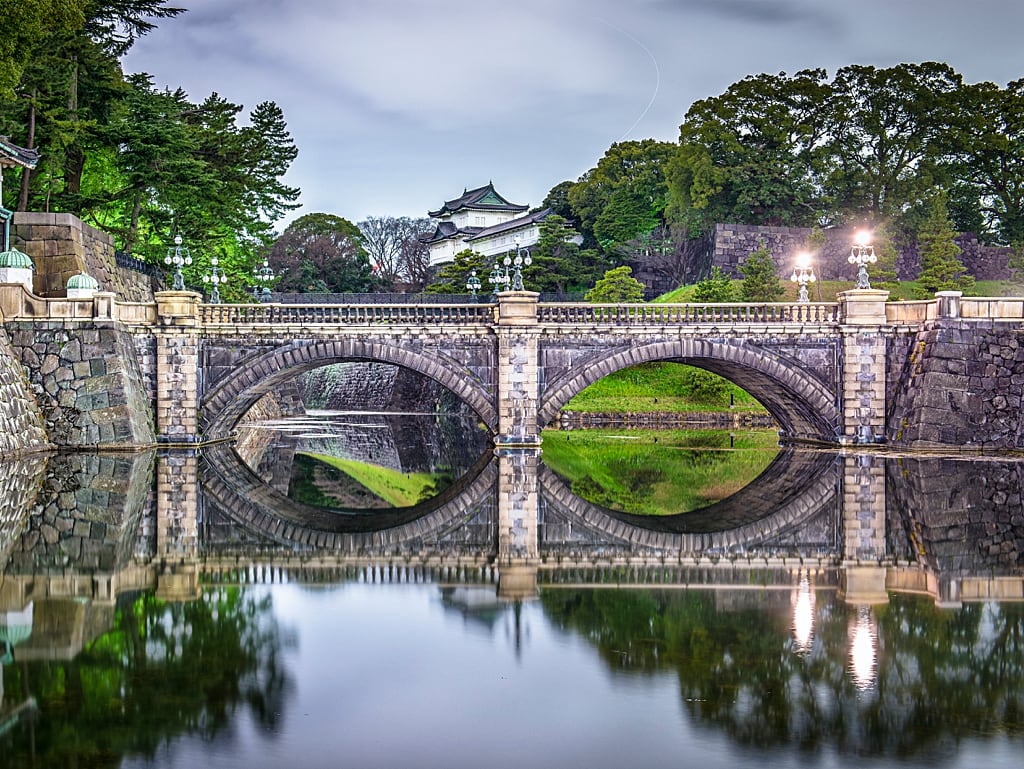
Closest Station: Nijubashimae. The old Edo Castle now serves as the primary residence of the Imperial Family. They only open their gates publicly twice a year, New Year and the Emperor’s Birthday. Even if you cannot enter the inner grounds, the surrounding moat and its spectacular bridge are just as visually appealing. A sight that’s hard to come by even when exploring other castles throughout Japan. You can go around to the castle’s east entrance and visit the Imperial Palace East Garden, which is open to the public but closed on Mondays.
Option 2: Yanaka and Nezu Districts
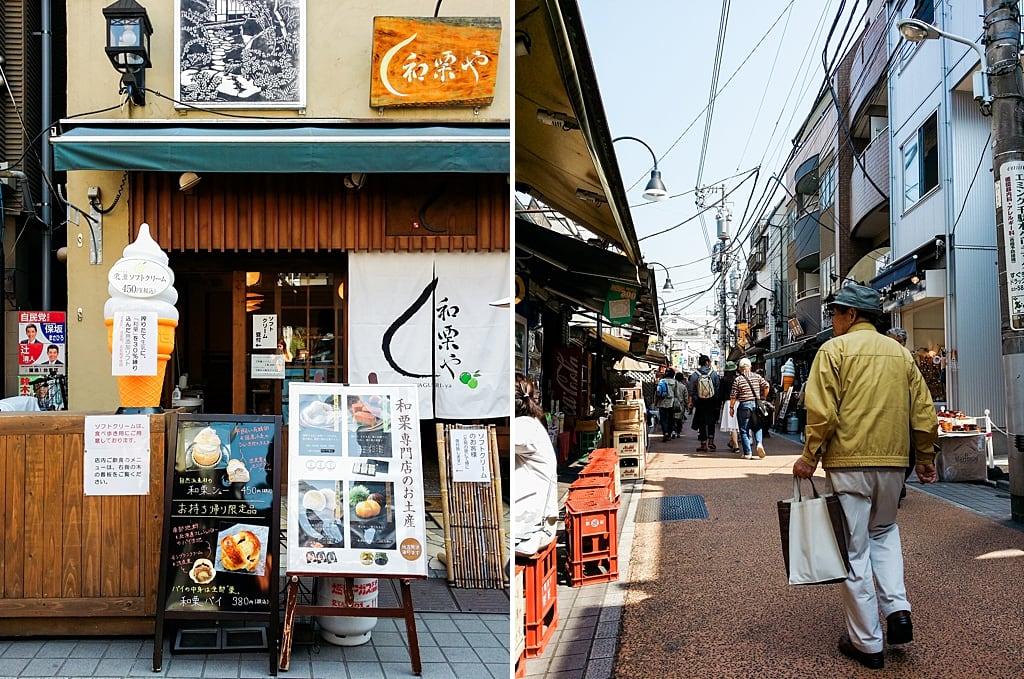
Closest Station: JR Nippori. Yanaka is the only old quarter town in Tokyo where the Shitamachi (downtown Tokyo) atmosphere from the Edo period still resonates. Just by strolling around, you’ll be fascinated by its rustic ambiance and feel like you’re back in Old Tokyo (Edo). One of the attractions here is the Yanaka Ginza, a cute shopping street filled with locally-owned shops and coffeehouses. Many tourists enjoy having a tour guide here as it’s slightly off-the-beaten-path. If you’d like to have one, do this in the morning and make your visit to Asakusa in the afternoon.
Option 3: Akihabara
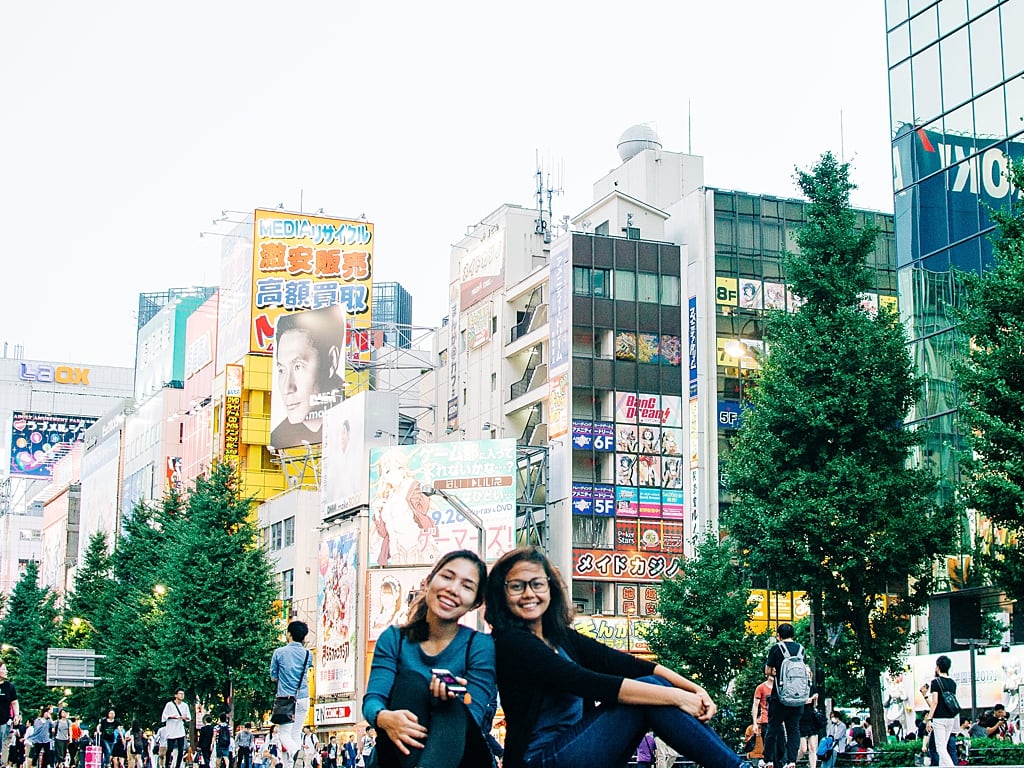
Closest Station: Akihabara. Akiba’s epicenter of electronics and otaku culture is a must-see for fans of anime, manga, video games, maid cafes, and Japan’s geek culture. The only thing I would recommend against is choosing to eat here. The food is drastically overpriced and made more for Instagram pictures than flavor.
Option 4: Tokyo Skytree
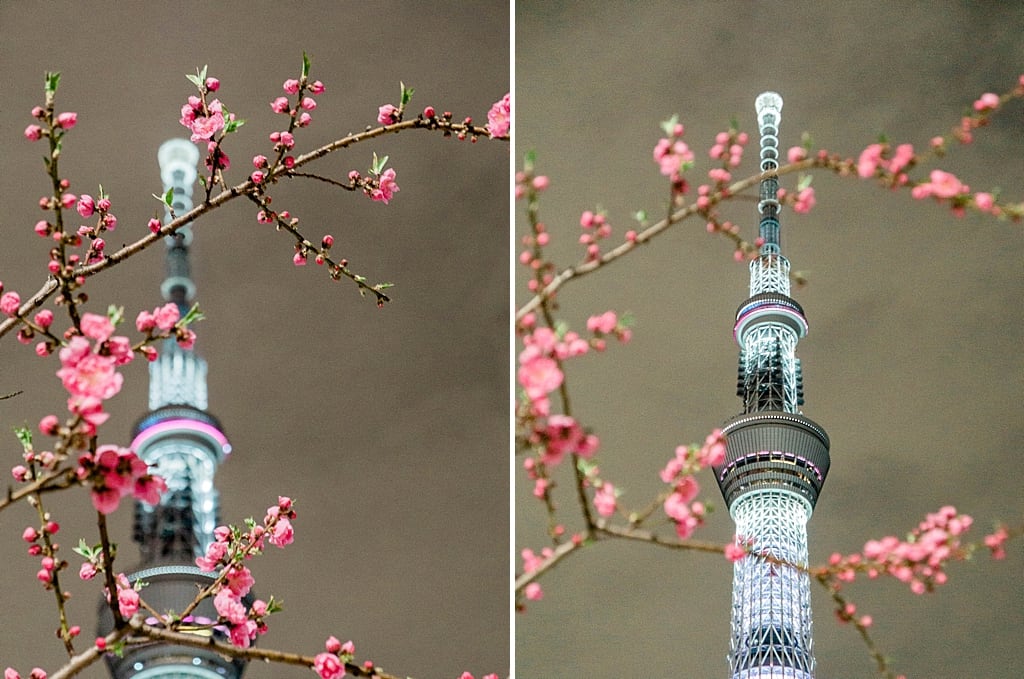
Closest Station: Tokyo Skytree. Tokyo Skytree is skippable. But the Tokyo Solamachi shopping mall right at the foot of Tokyo Skytree is worth checking out (than the Skytree tower itself). If you’re interested in seeing the view from the top, go on a clear day only. Click to get discounted tickets for Tokyo Skytree
Day 4: Welcome to Hakone
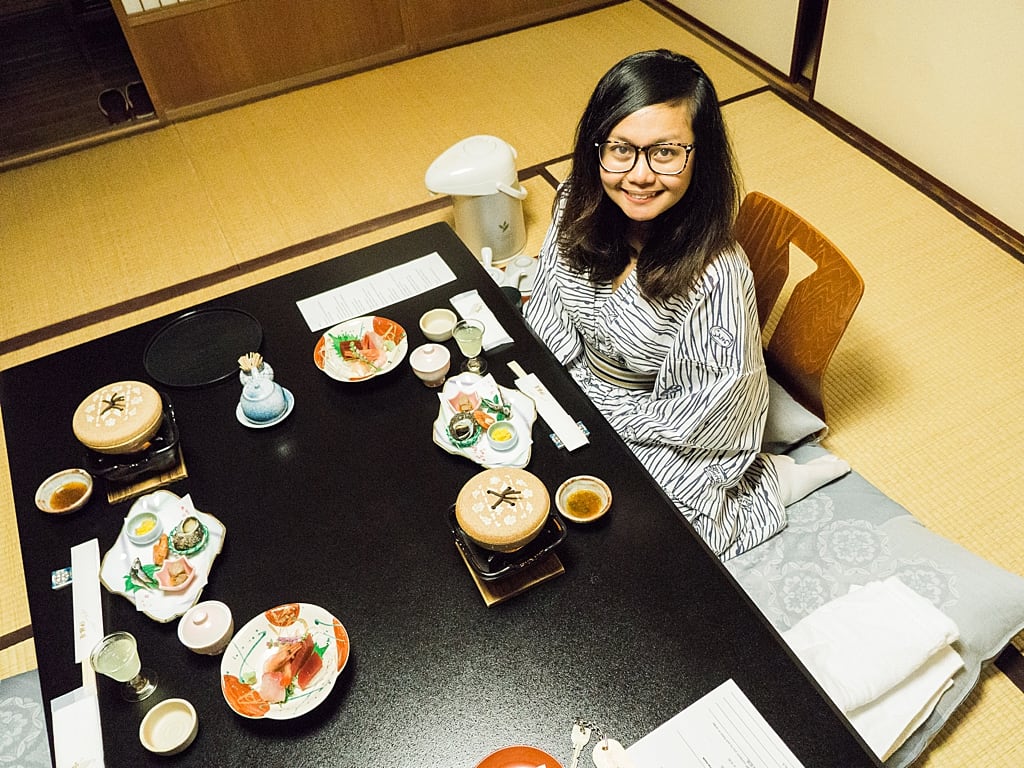
Hakone, part of the Fuji-Hakone-Izu National Park, is a charming small onsen town (hot spring town) with lots of art museums and nature. It’s a perfect place to unwind and soak in the mineral-rich onsen (hot spring) and escape from the hustle and bustle of Tokyo. In Hakone, your accommodation choice will play a huge role. It is not the attractions and things to do that you’re after here. But your immersion in the traditional Japanese inn that’s known for its top-notch omotenashi (Japanese hospitality)—something you must experience. Many Tokyoites come to Hakone to seek relaxation first, and sightseeing is just secondary. We believe that should be your goal as well. To achieve this goal, we highly recommend staying at a ryokan, a traditional Japanese inn, for an authentic experience. We suggest finding one that offers full kaiseki meals (conventional Japanese set meals) and has an onsen bath. If you have tattoos or can’t be bothered with being naked in public, choose a ryokan with private onsen (hot spring bath).
How to get to Hakone: Activate your JR Pass on this day! The easiest and fastest way to go to Hakone is via the bullet train from Tokyo Station (or Shinagawa Station) to Odawara Station. This is covered by your JR Pass and you will activate it before you take the train. Once you arrive at Odawara Station, purchase the 2-day Hakone Freepass. This discount excursion ticket will cover unlimited rides for all sightseeing transportation in Hakone, such as the ropeway, cable car, Lake Ashi cruising, and buses. Then from Odawara Station, transfer to Hakone Tozan Line Local (covered by your Hakone Freepass) towards Hakone-Yumoto Station. With your Hakone Freepass, you can start sightseeing using the recommended sightseeing course in your pamphlet that comes with your Hakone Freepass. Or just check-in your ryokan.
Many of the accommodations in Hakone have onsens (hot springs). Since Hakone is within the border of Fuji’s volcanic regions, having a hot spring bath in your ryokan is almost a guarantee. There is a Hyatt Regency in Hakone, but you won’t feel the omotenashi culture here. So it’s best to stay at a traditional ryokan in Hakone. When selecting your ideal accommodation, the best location depends entirely on what you want to achieve. If you’re visiting for views of Mt. Fuji, the hotels and accommodations around Lake Ashi are your best choice. It’s also near the walking trails of the peaceful and beautiful Hakone shrine. If sightseeing is your goal, then we recommend staying in the Gora area. From here, it’s also easy to reach top attractions such as the Hakone Open Air Museum and Owakudani Valley “Valley of Hell.”
If you’re looking to do a little bit of shopping or want quick access to great food options, then you are to love staying near Hakone-Yumoto Station. There are many rows of stores around here. The number of restaurants in the area outnumbers what’s found in the other parts of Hakone. Hakone-Yumoto Station also has a rich history. It opened in 1888 and is a significant part of the old Tokaido Road.
Here are the ryokans and accommodations we recommend in Hakone:
- High-end: Gora Kadan, Hakone Kowakien Ten-yu, Yamagaso
- Mid-range: Hakone Suimeisou, Hakone Yumoto Onsen Tenseien, Gyokutei, Gora Saryo
- Budget: Emblem Flow Hakone, Onsen & Garden -Asante Inn-, K’s House Hakone – Onsen Hostel
Day 5: Hakone Attractions
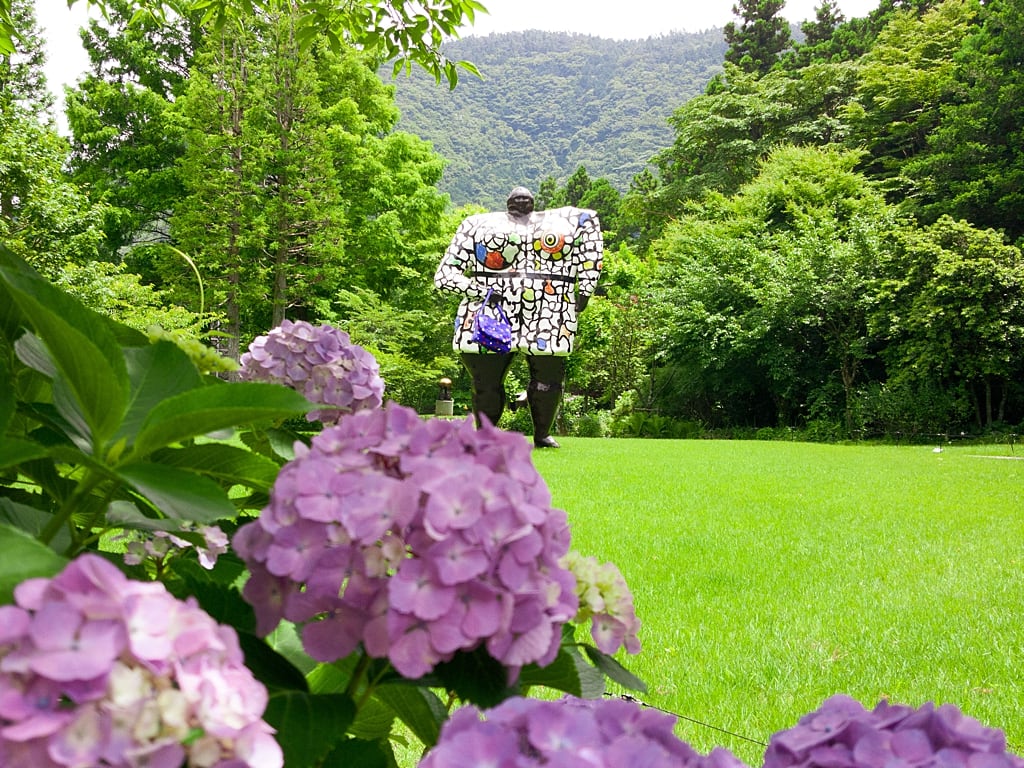
With your Hakone Freepass, you can cover pretty much every Hakone attraction, but which to go to is totally up to you. Again, the goal in Hakone is to relax and breathe the fresh air of Fuji-Hakone-Izu National Park. From our experience, 2-3 attractions are enough to see in Hakone. Here are some ideas for you to see in Hakone. We’ve arranged in the order in a matter of easy sightseeing.
- Surrounding areas of Hakone-Yumoto Station. Hakone-Yumoto Station itself is an attraction to those who love to shop and for those who love quick bites. It has rows of stores of food, souvenirs, street food, and some sweet treats worth checking out. Also, check out the red bridge across from it.
- Hakone Open Air Museum. Admission fee ¥1,400. Definitely skippable unless you like art. It’s quite huge, so this museum might consume your time.
- Owakudani. A geothermal valley with hot springs famous for its black eggs cooked in its sulphuric hot springs. Legend has it that eating these eggs will prolong life.
- Lake Ashi. If you’re lucky and get a clear day, you can see the beautiful Mt. Fuji from here. The Pirate Ship Cruising is included in your Hakone free pass so take advantage of it. Note that depending on the weather, the cruise will not operate.
- Hakone Shrine. Where the famous giant floating torii gate stands. This is an excellent photo spot! The main shrine is nestled in nature, and going to the massive torii gate is a bit of a hike.
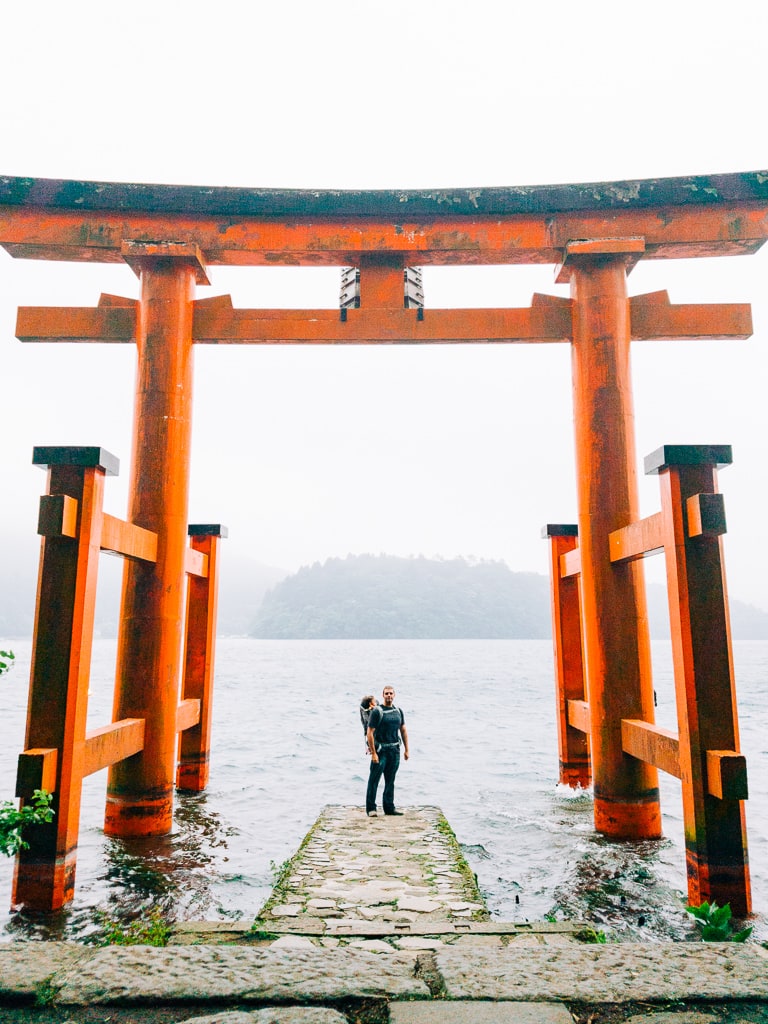
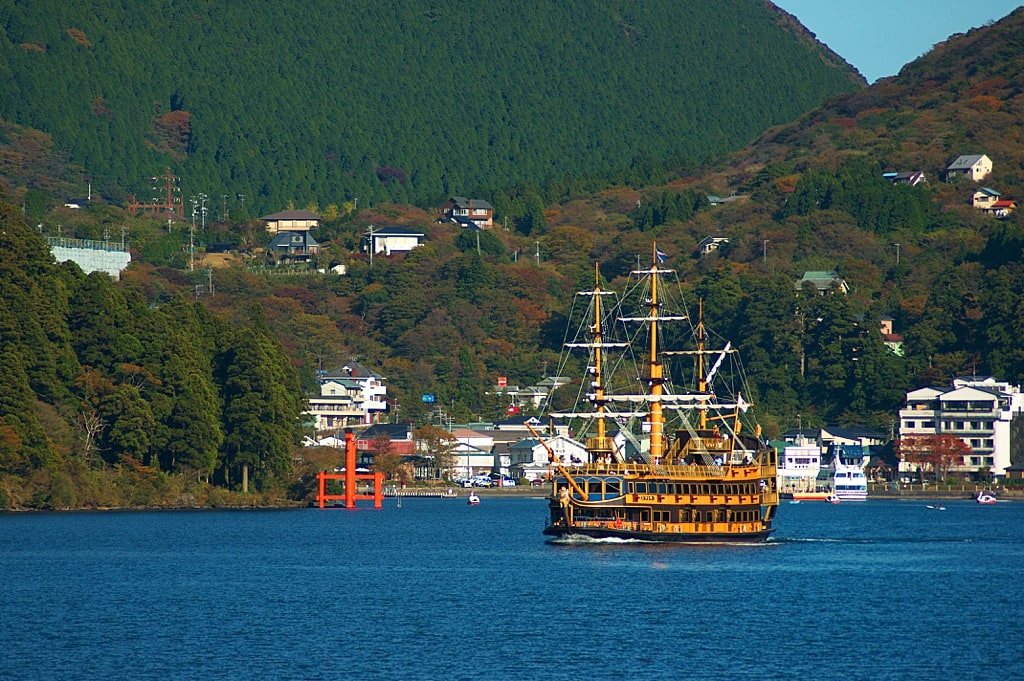
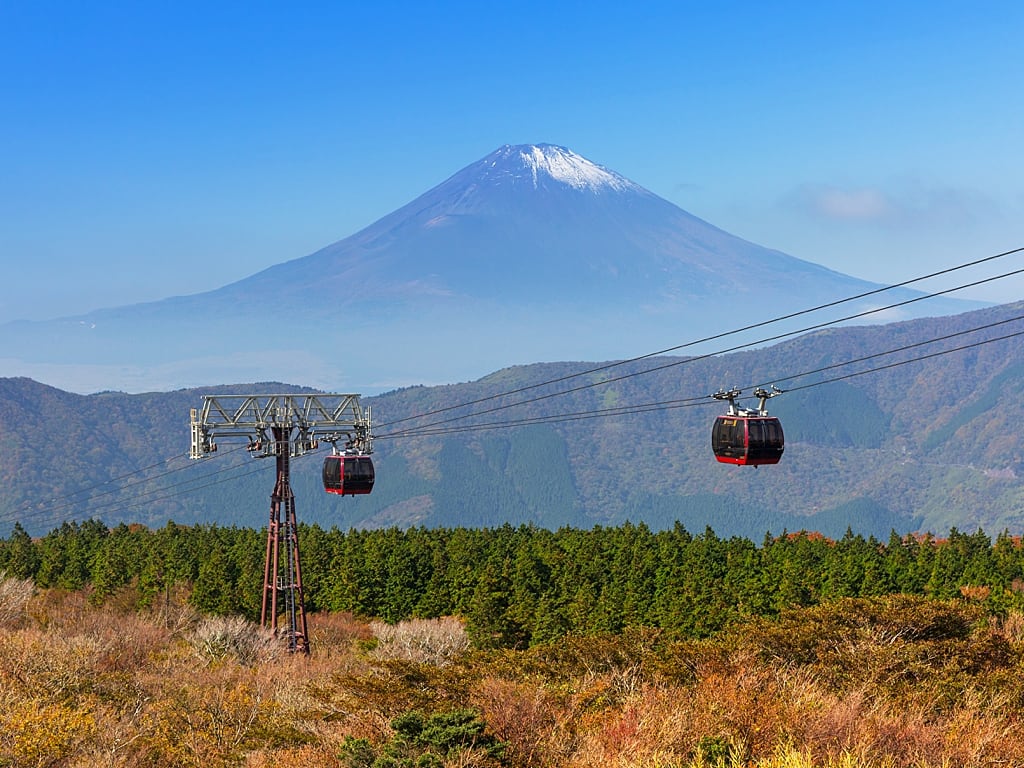
Day 6: Welcome To Kyoto!
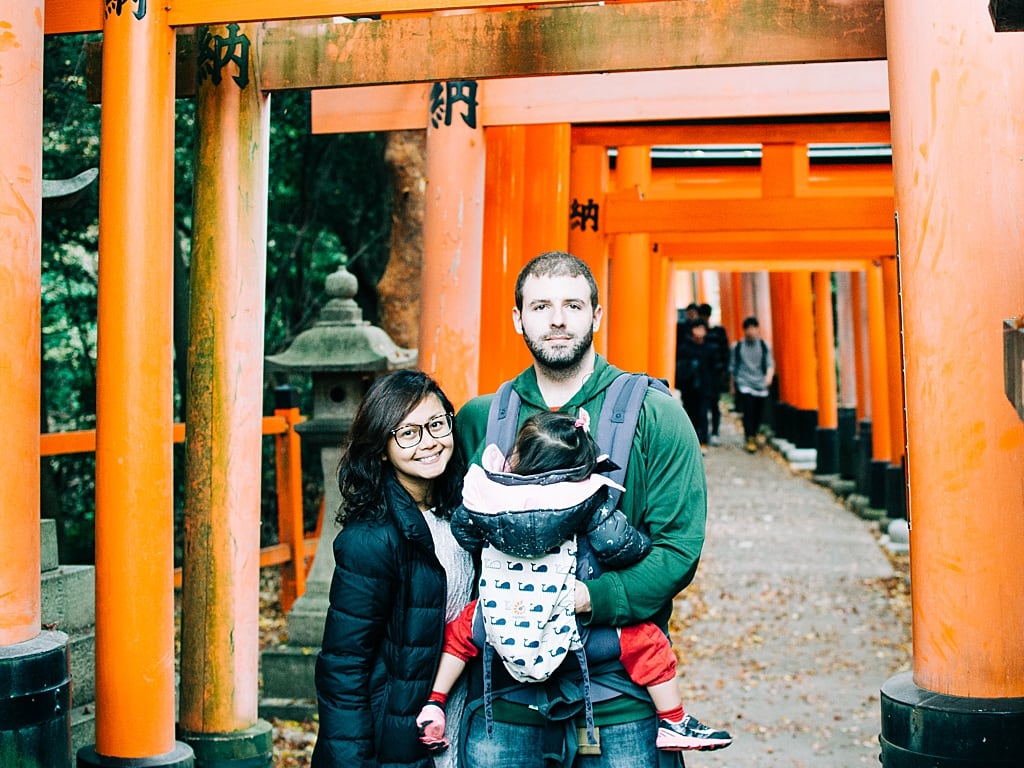
After breakfast, check out of your hotel in Hakone early and head to Odawara Station for Kyoto’s bullet train. Travel time is about 3 hrs. We also suggest that you get lunch or a meal in the Shinkansen (yes, they serve food! And yes, it’s surprisingly good!)
Here are some of our pre-arrival notes about Kyoto:
- Stand on the right side of escalators. Kyoto follows Osaka’s rule. It forces people to walk on the left and stand on the right when riding escalators, the opposite of Tokyo. It is insulting to stand on the walking side.
- Not all railways here are covered by JR Pass. Just like Tokyo, you’re going to use your IC Card here to ride the trains. You also have the choice to buy a Kyoto Pass with unlimited rides via Kyoto’s subways and buses. For this itinerary, we don’t recommend getting it. It can make you feel obligated to cram in as much travel as possible and is only valid for a certain number of days, so it’s not really worth it.
- Expect attractions in Kyoto to be very crowded. Kyoto has become overcrowded over the years because Japan has relaxed the visa requirements for neighboring Asian countries such as China, Thailand, Indonesia, and Malaysia. Besides, Kyoto has gotten a lot of attention from Western foreigners because it’s cheaper than Tokyo. So consider hitting significant attractions during the weekdays to avoid some of the crowd.
- You are going to walk a lot in Kyoto. If you walked a lot in Tokyo, expect even more walking in Kyoto. While still boasting a very efficient transportation system, there are a lot fewer train stations in Kyoto. So the activities require more walking to reach. This is why we recommend staying at accommodation with an onsen, to rest your sore feet after a long day!
- You don’t have to see each and every attraction here. Just like in Tokyo, only prioritize interests that are important to you. I actually have a friend who got sick of seeing shrines and temples in Kyoto after following a specific travel blog’s itinerary. He expressed that it wasn’t only tiring, but it was repetitive and expensive due to paying entrance fees. Another friend also said that she wasn’t that impressed because she’s seen temples in places like Cambodia and Thailand, where the temples are extraordinary. So really think about what to include in your itinerary. But of course, to each their own.
- Rent a kimono. Many tourists visiting Kyoto rent a kimono to experience a bit of traditional Japanese culture while sightseeing. Think carefully about which day you’d like to rent your kimono, and be sure to consider here the rental location. It should be convenient and easily accessible from the train station and near where you will start and end your tour. It’s also essential to make your reservations online. This is a prevalent activity for both foreign and local tourists.
Here are our recommended ryokans and hotels in Kyoto:
- High-end: Suiran Luxury Collection Hotel – Marriott, Sumiya Ryokan Kyoto, CAMPTON KIYOMIZU, The Ritz Carlton
- Mid-range: Sakura Urushitei, Cross Hotel Kyoto
- Budget: Gion Ryokan Q-Beh, Rin Rokujo Horikawa
Fushimi Inari Shrine
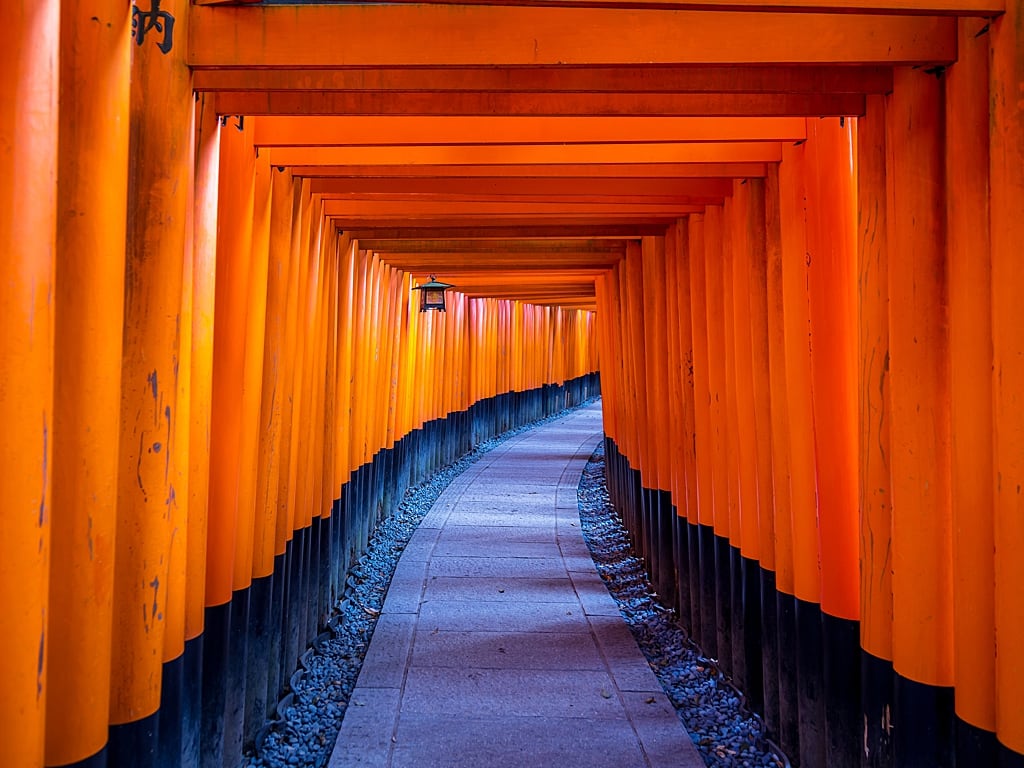
Upon arrival at Kyoto Station, Fushimi Inari Shrine is very convenient to reach via a short 5-min train ride (Inari Station covered by JR Pass). Home to Senbon Torii (Thousands of Torii Gates), Fushimi Inari is Japan’s most important shrine to Inari, the Shinto God of Rice. The shrine has very ancient roots, dating back to before 794 AD. It has a peaceful hiking trail offering some fantastic views of the city. Take some time and try some kitsune udon (fox udon; don’t worry, it’s not made of a fox) and inari sushi! Want to visit Fushimi Inari in a kimono? Make an advance reservation through this shop. It’s only a few minutes from Inari Station.
Day 7: Walking Tours or Cultural Experience
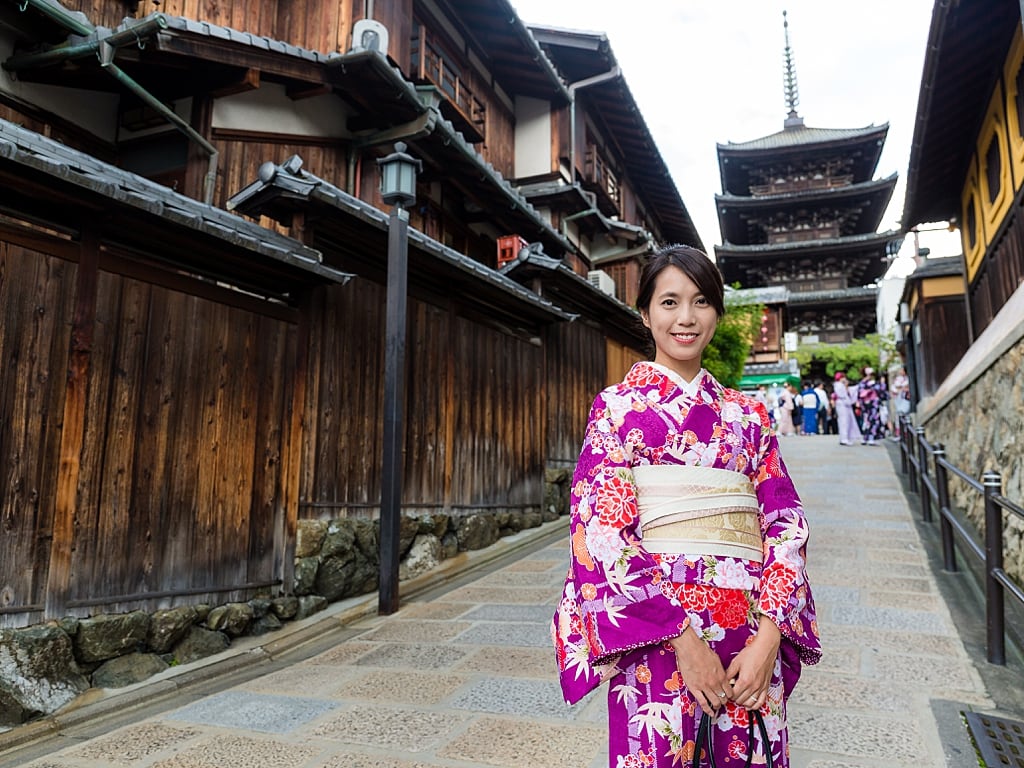
You have plenty of options here so think carefully on which activity you’d like to experience the most.
Option 1: Higashiyama Area
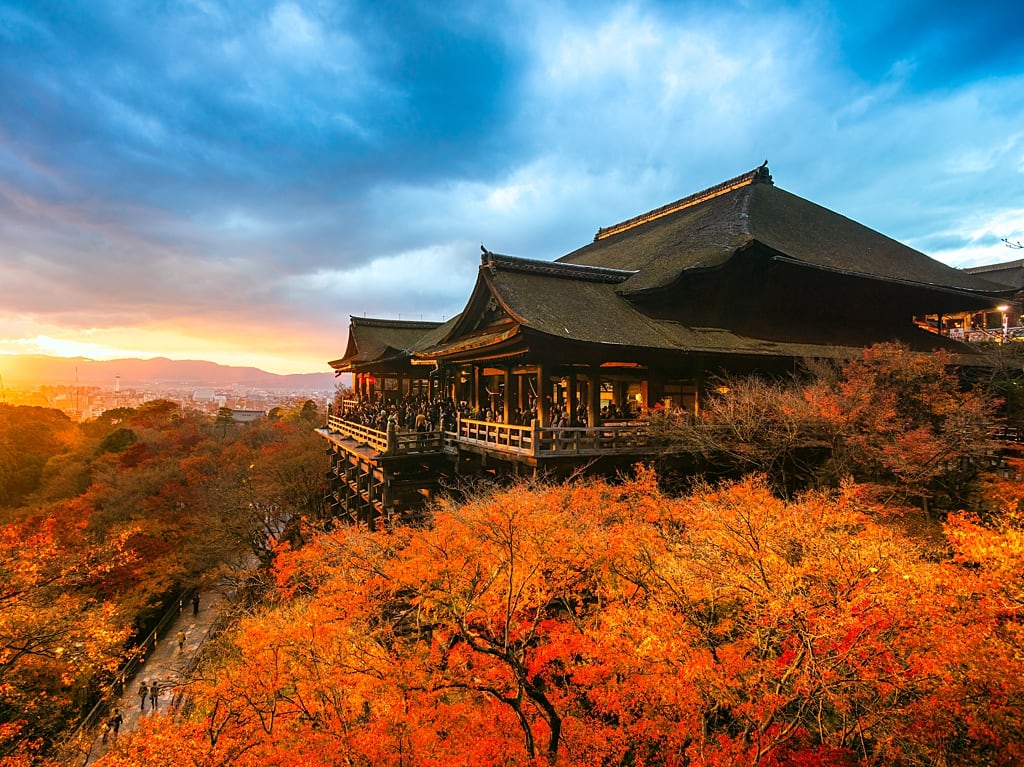
After breakfast, head to Kiyomizudera temple, one of Japan’s most important and ancient temples, founded in 780 AD. It has massive temple grounds and is also a UNESCO Heritage site. The entrance fee is ¥300. After your visit to Kiyomizudera, head down to the famous shopping streets of Sannen-zaka and Ninen-zaka. The area has an ancient town feel as all the shops are wooden and built very traditionally. The shops sell various goods, including local treats, tea, wooden dolls, and other crafts. So be sure to bring an extra bag along if you’re interested in picking up any souvenirs!
Other notable sightseeing streets in the area are:
- Yasaka-no-To pagoda. One of the iconic sites of the city featured on most Kyoto postcards.
- Ishibe-koji. An attractive stoned street lined with a wooden corridor and narrow entrances to traditional Japanese restaurants and ryokans.
- Nene no Michi. Stretching from Gion to Sannen-zaka, this area retains the look and feel of old Kyoto.
Please note that the Higashiyama area is minimal. So the sightseeing areas here are relatively compact. Even though we’ve listed many notable attractions here, don’t become overwhelmed. It’s easy to see them all, mainly if you are guided by a map! Click to use our walking route map. You’ll definitely spend time stopping here for photos. Be wary though, these route is often crowded, especially on the weekends. You’ll most likely end your walk at Hanamikoji Street. From there, the Gion-Shijo train station is just a 4-min walk. You can take the train to your hotel to relax or continue exploring on your own.
Option 2: Walking Tour With The “Last Samurai”
An excellent alternative to the Higashiyama area is the one of a kind walking tour led by “The Last Samurai” Joe Okada, the oldest licensed English-speaking tour guide in Japan! This is a genuinely insightful tour as Joe knows every corner of Kyoto, but he won’t take you to touristy places. Part of the time is a mini-show, “Cutting Apple in the Air.” Note that samurais in Japan were abolished a long time ago, in 1868. So Joe Okada is not actually a samurai. The title is honorary and given to him after he mentored two American students who rapidly cut apples in the air within 60 seconds. This led to both ending up in the Guinness World Records book. In 2011, he was also appointed by the Kyoto City to be the city’s Omotenashi Ambassador.
What to do in the evening of option 1 or 2 itineraries: Explore downtown Kyoto, an excellent place for shopping. A perfect place to start is the Shijo Kawaramachi Intersection near Kawaramachi Station, then walk your way towards Pontocho Geisha Alley and Gion Tatsumi Bridge.
Option 3: Experience a Traditional Japanese Culture
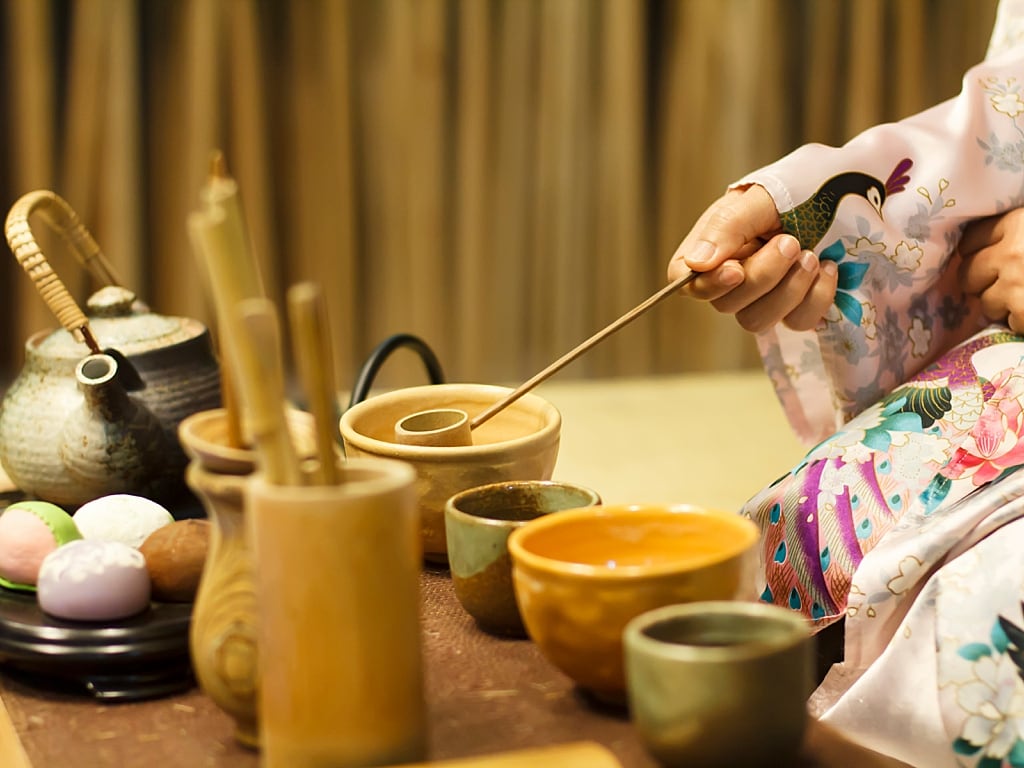
Experience an authentic traditional tea ceremony performed by a tea master. In the evening, enjoy a spectacular dinner with a Maiko (a geisha apprentice). With this experience, you’ll enjoy a fantastic dinner at the famous Yasakadori Enraku restaurant along with a Maiko. You’ll watch an elegant dance, play some traditional parlor games, chat, and enjoy a rare photo session. It’s truly an unforgettable experience.
Option 4: Arashiyama Bamboo Forest
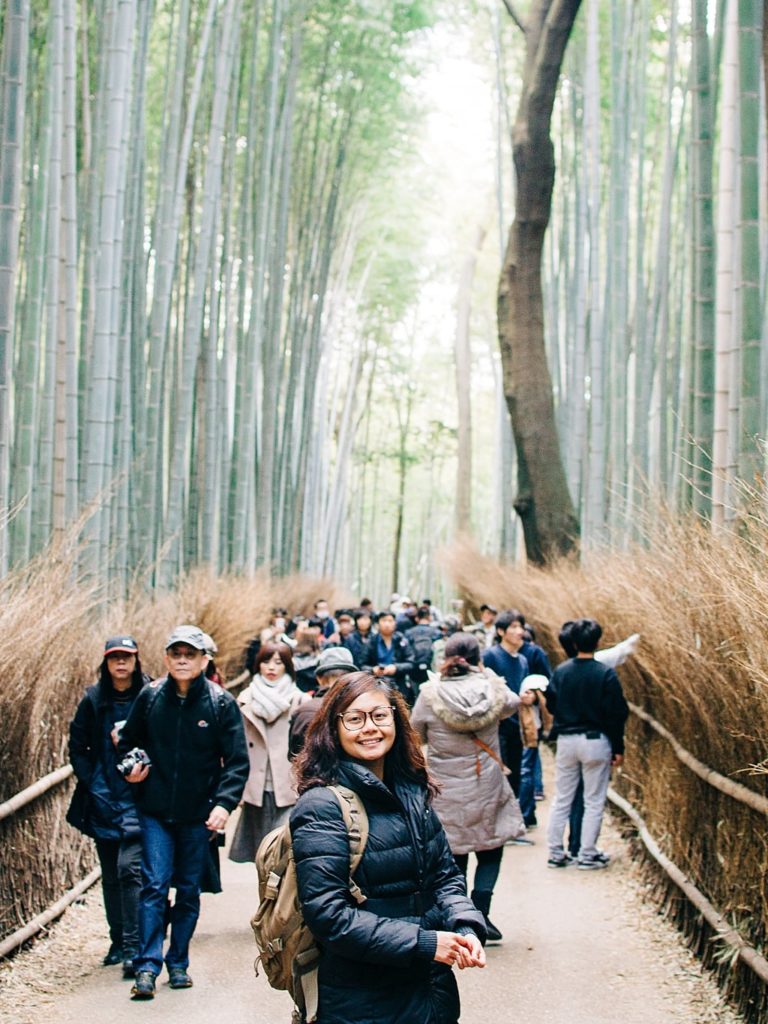
Arashiyama Bamboo Forest is a full day trip itself as there are plenty of things to see and do here aside from just the Bamboo Forest. However, you absolutely need to hit the trail very early to really enjoy its pristine beauty as it suffers from enormous crowds after 8 a.m. So if you think you can get there before 8 a.m., do it. If not, you can skip it or try and visit around 5 p.m. after the crowd has died down. There are 3 train stations around the Bamboo Grove. Since you have JR Pass, take the JR Line to Saga-Arashiyama Station. From there, the Bamboo Grove Forest is only a 5-10 minute walk.
Day 8: Day Trip To Nara Or Osaka
Option 1: Nara
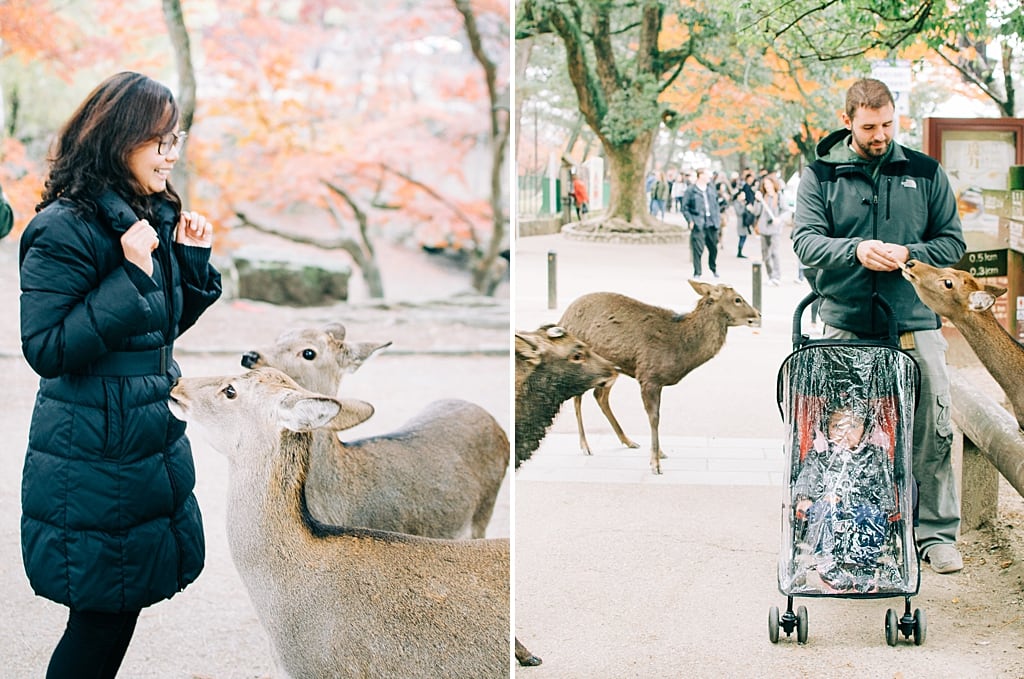
Closest Station: Kintetsu Nara. Nara is only an hour away from Kyoto. Nara offers another out of this world temple, Todaiji-Temple, the world’s largest wooden temple. Oh, and the entire town is filled with deer! Please be wary of the deer here and don’t abuse them. Also, don’t feed them too many deer cookies as they will chase you! Please be careful not to catch any ticks here. Although Japan has declared that deer in Nara are free of Lyme borreliosis, you should still be careful and protect your skin with long clothes and tick repellant.
Option 2: Osaka
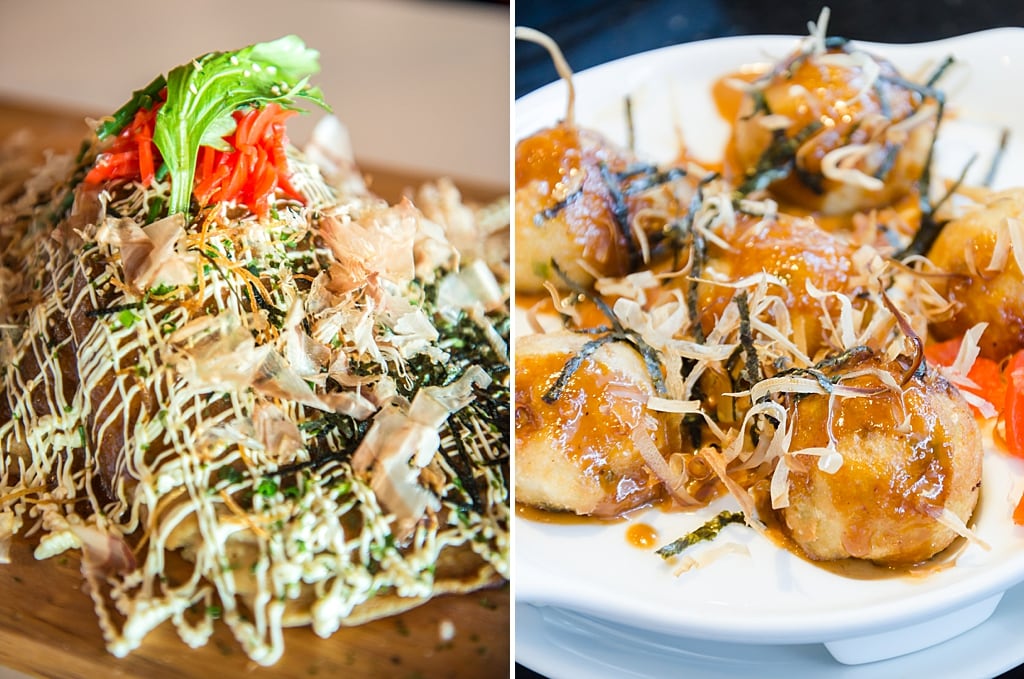
Best Station to Start: Namba. Osaka is just like a smaller version of Tokyo, only older and cheaper. But the food scene here is extraordinary, earning the nickname “Japan’s Kitchen.” Should you decide to visit Osaka over Nara, make sure to join a walking food tour to elevate the experience and eat where the locals eat. The tour starts at 11 a.m. and Osaka is only 30-40 minutes from Kyoto Station. So it’s not difficult to arrive on time. There’s also an evening bar-hopping tour here. The remainder of the day is your own. Explore whichever city you’ve chosen and then return to Kyoto.
Day 9: Back To Tokyo
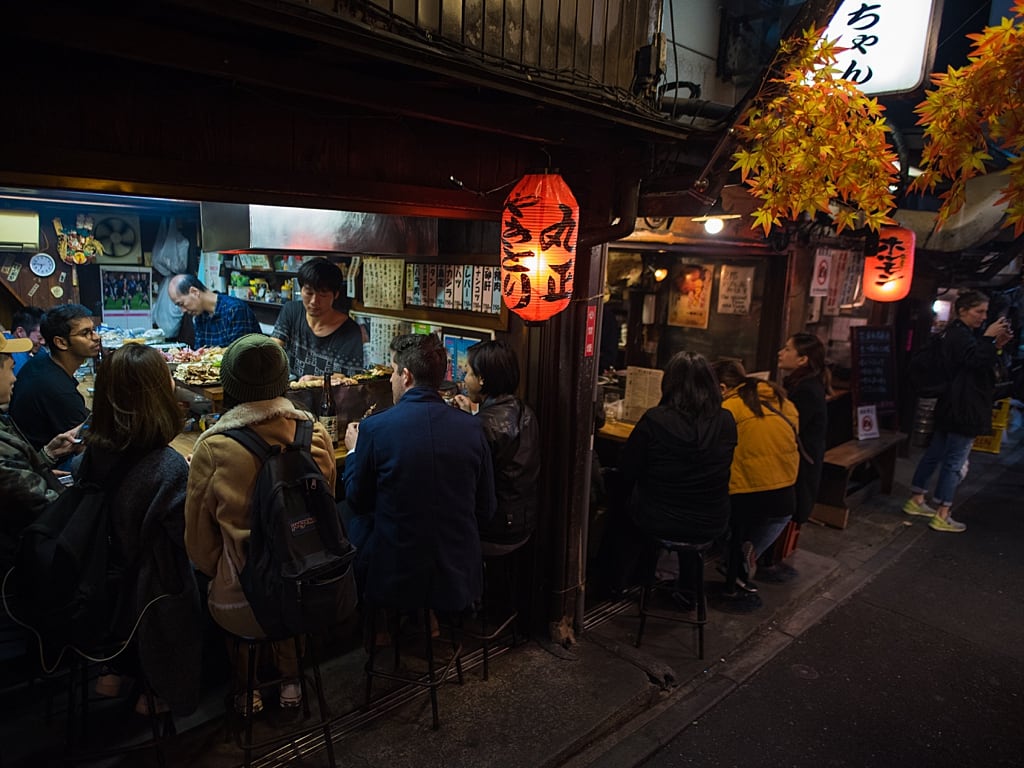
From Kyoto to Tokyo are about 2 hours and 40 minutes. Once you’re back in Tokyo and freshened up in your hotel, we recommend heading out to do a little sightseeing. We’ve got a few suggestions for this day as well. Only choose one!
- Explore Shinjuku. Walk around and feel small in Shinjuku’s business district with towering skyscrapers surrounding you, then make your way to the Tokyo Metropolitan Government Tower. It’s free to enter and offers a nice view of the entire Tokyo Metropolitan area. End your evening at either another food and drink tour to izakayas in Shinjuku. If you’re looking to experience Tokyo’s nightlife, explore the “Sleepless Town” of Kabukicho, which is filled with many night clubs and bars, loves hotels, shops, and restaurants. Or visit the Don Quijote store near the Giant Godzilla statue hiding behind the Hotel Gracery and Toho Cinema.
- Explore Roppongi. Roppongi is both a significant business and entertainment area, as it transforms from a family-friendly location of art, shopping, and culture into an ‘expat playground’ at night. This place is costly for food and drinks, so be prepared to spend. Be careful in Kabukicho and Roppongi and avoid talking to foreign men that are trying to scam you.
- Visit the Studio Ghibli Museum in Mitaka. For fans of Studio Ghibli, this is a must-see. The museum makes you feel like you’ve walked into the world of animation creation. Just be sure to book ahead and choose a convenient time after you arrive in Tokyo. You can click here to learn how to buy your tickets. Afterward, either take a stroll through Inokashira Park or explore Kichijoji, an exciting area like a mini-Shibuya, but cozier.
Day 10: Departure
Some people like to do a bit of last-minute shopping and sightseeing in Tokyo if their flight is in the evening. This is why forwarding your luggage to the airport the day before your flight makes your final day far more enjoyable. Just don’t forget that spare duffle bag that you packed to up stock on last-minute souvenirs. Upon boarding the airplane, I guarantee that you’ll already be thinking about your next trip to Japan. Japan is addictive! The best thing about our 10-day itinerary is that it covers many of the highlights of Japan in-depth. When planning for your next trip, it’ll be easier for you to focus on a more specialized itinerary. Giving you more freedom with other destinations in Japan you have yet to discover. Maybe on your second trip, you just want to stay in Kyushu or do the Nakasendo route. How about Hokkaido? Many people only stay in Tokyo, and that’s robbing yourself of some incredible experiences! I can guarantee you, you are going to want to come back and see more of Japan.
A Few Notes On When You Should Activate The JR Pass
Our itinerary starts in Tokyo, where most trains are not covered by JR Pass. Thus, we recommend activating it on Day 4 before you head out to Hakone. To activate it, look for the JR East Travel Service Center in Tokyo Station or Ueno Station and exchange your JR Pass eVoucher for the actual JR Pass. Don’t activate your JR Pass upon arrival because you’ll just end up wasting it. Instead, use any of the other transportation options listed in the resources below:
- How to transfer from Narita Airport to central Tokyo
- How to transfer from Haneda Airport to central Tokyo
Pre-Travel Tips and Information
- JR Pass is not a requirement. Get the JR Pass that is valid for 7 days should you decide to get it. The JR Pass can only be bought online and while outside of Japan. Buy your JR Pass at least two weeks before your trip. The JR Pass Exchange voucher will be mailed to you, usually overnight. Click here to order yours.
- Hotel & accommodations. To save time, pick a hotel near a train station. A 15 to 20-minute walk from the train station is quite far and will be very inconvenient. Most hotels in Japan listed mention the nearest train station, so make sure they are 10 min or less walk from the train station. We recommend Booking to book all your accommodations as they have the largest database of hotels and accommodations in Japan. If you’re not a fan of the platform, Agoda is also an excellent booking site for Japanese accommodations.
- Book your room with breakfast. Restaurants that open as early as 6 a.m. are rare in Japan. So make sure your hotel reservations come with breakfast. That way, you’re ready to tackle the day instead of spending half an hour searching for “breakfast near me” and wasting another half an hour walking to the place. An exception here is if your hotel happens to be near a breakfast buffet restaurant, then that’s worth trying.
Must-not miss: Sumo Grand Tournament
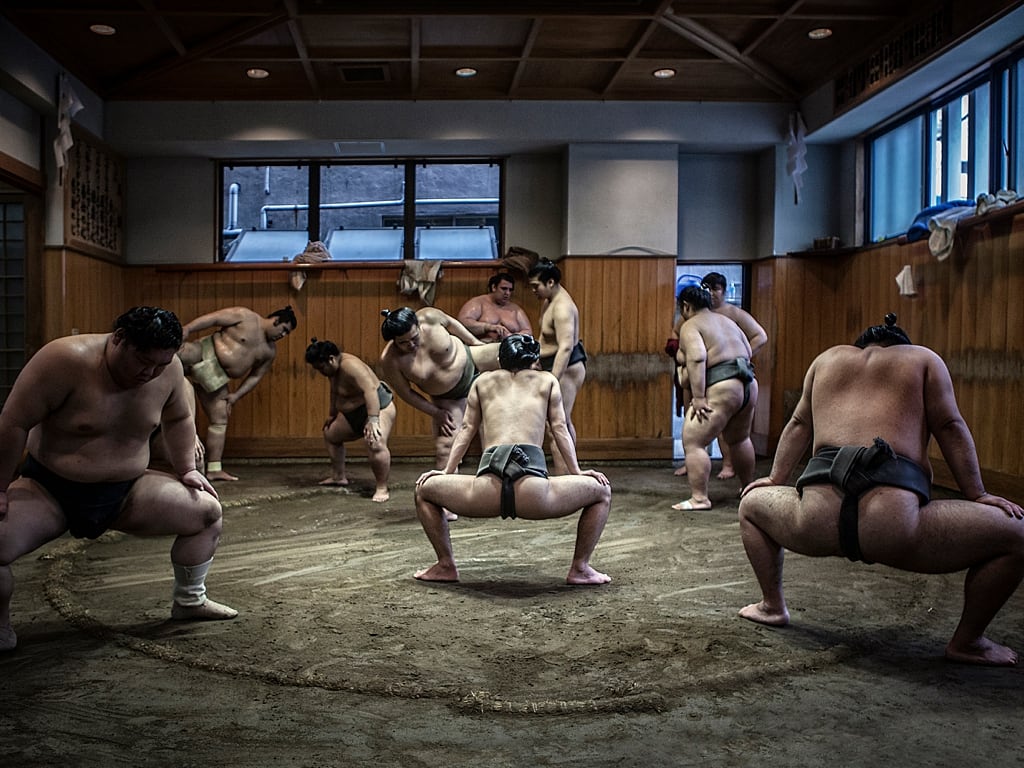
The Sumo Grand Tournament in Tokyo takes place 3x a year and 1x in Osaka, and each tournament event lasts for 15 days. Sumo is an essential sport in Japan. Watching the wrestlers do their rituals inside the ring is quite an experience. Please see this link for the sumo schedule.

